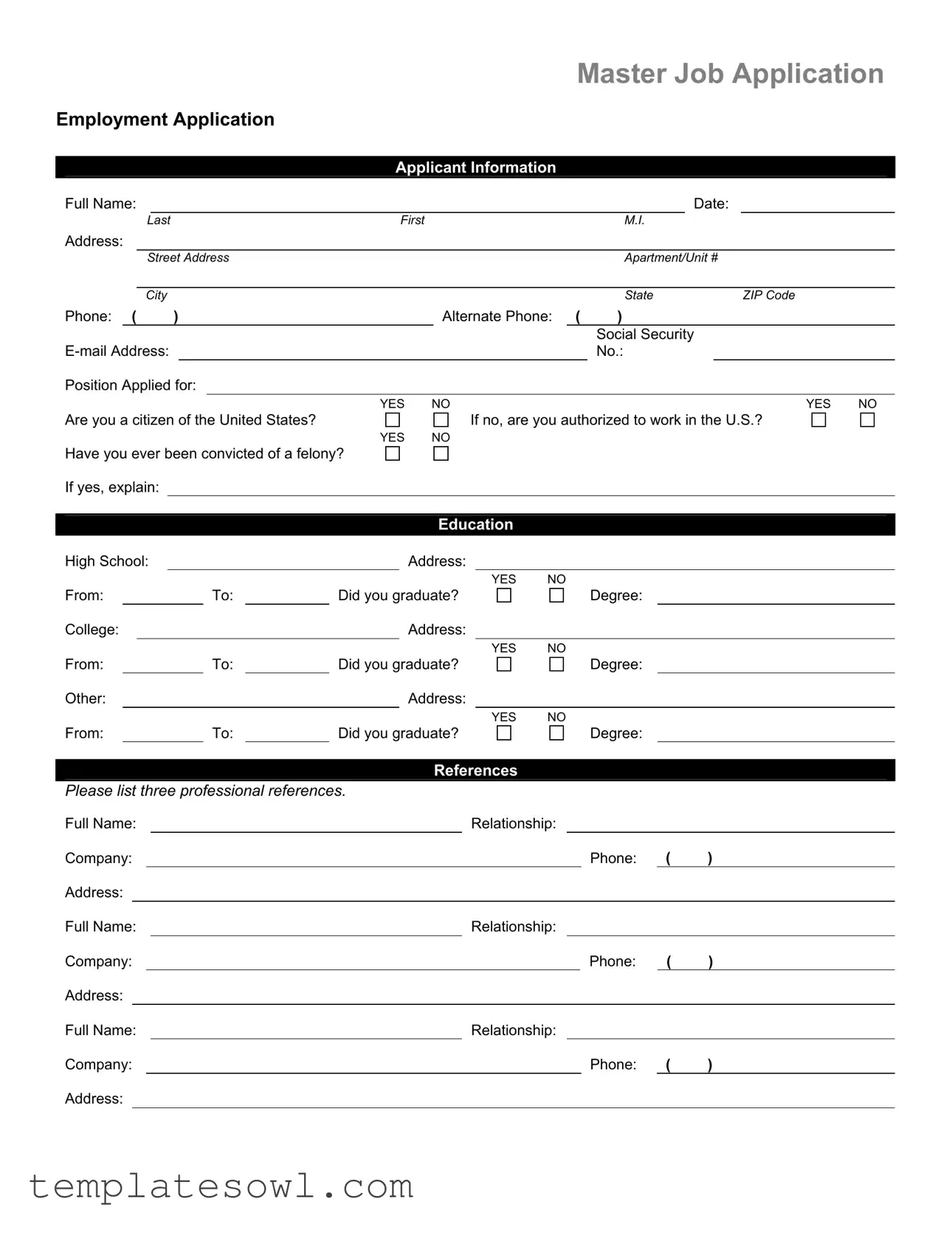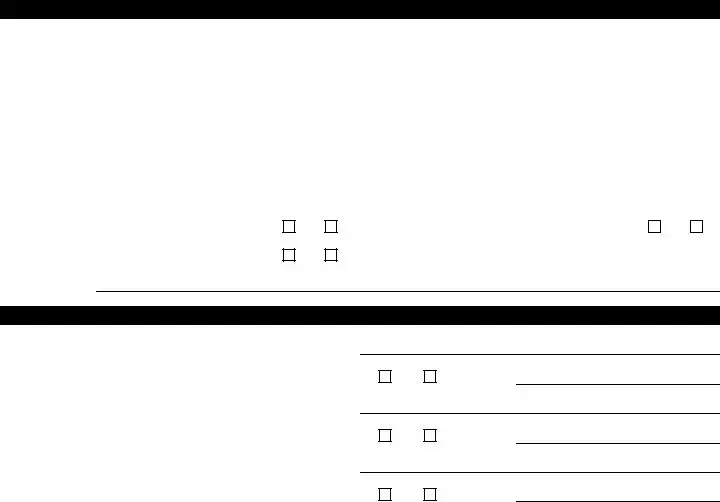What is the Master Job Application form used for?
The Master Job Application form serves as a universal job application to collect essential information from candidates applying for various positions. It helps employers gather standardized details about your background, work experience, and qualifications, ensuring a smooth recruitment process.
What information do I need to provide in the Personal Information section?
You will need to supply your full name, address, phone numbers, email address, and Social Security number. Additionally, you must indicate whether you are a U.S. citizen or authorized to work in the U.S. This information is vital for verifying your identity and eligibility for employment.
Do I need to list my educational history?
Yes, it's important to include your educational background on the form. You should provide details from your high school, college, or any other educational institution you attended. Indicate the dates of attendance, the degrees obtained, and whether you graduated. This helps employers understand your qualifications better.
How many professional references do I need to provide?
You are required to list three professional references. These should be people who can vouch for your work ethic, skills, and professional experiences. Include their names, relationships to you, companies they work for, and their contact phone numbers.
Is it necessary to provide previous employment details?
Definitely. Listing your previous employment helps employers assess your work history and relevant experience. For each position, include the company name, contact information, your supervisor's name, job title, starting and ending salaries, your responsibilities, and the reason for leaving. This information allows employers to gauge your qualifications for the position.
What if I've never been convicted of a felony?
If you have not been convicted of a felony, simply check "NO" in the section addressing felony convictions. If you check "YES," you will need to explain the circumstances briefly. Honesty is key here, as potential employment may hinge on this information.
Can I verify the accuracy of my application?
Yes, before submitting, ensure all your responses are accurate and complete. The form includes a disclaimer where you certify the truthfulness of your information. Misleading or false statements can lead to disqualification or termination, so take your time to review your application thoroughly.
What should I do if I have questions while filling out the form?
If you have questions about any section of the Master Job Application form, don’t hesitate to reach out to the hiring organization or HR department. They can provide clarification and guidance to help you complete the application correctly and confidently.


